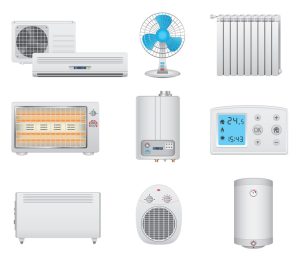We recently discussed the benefits of choosing a high-efficiency air conditioning system for your next installation, looking at how these units consume lower amounts of power to produce quality cooling levels. This brings up another question, however, which is how this efficiency is measured.
A few years ago, we’d have a basic response to explain the AC efficiency measurements universally used in the HVAC industry. But times have changed and we now have a new system in place. It’s not as complicated as you may fear, especially if you weren’t familiar with the previous system. As part of the air conditioning service in Conyers, GA we provide, we’d like to go through the current efficiency measurements for air conditioning systems.
EER2/SEER2
For many years, the measurements used for AC efficiency were EER and SEER (Energy Efficiency Ratio and Seasonal Energy Efficiency Ratio). Starting January 1, 2023, new air conditioners and heat pumps sold in the United States are required to meet new efficiency standards, and this was reflected in a switch to EER2 and SEER2.
The transition involves manufacturers adapting their products to comply with new, more stringent efficiency requirements and testing methods. This is part of a broader update in energy efficiency standards for HVAC systems by the U.S. Department of Energy (DOE) to improve energy savings and reduce environmental impact.
EER2/SEER2 is a more stringent version of the EER/SEER rating system used to measure the efficiency of air conditioning and heat pump systems. SEER is a metric used to indicate how much cooling a system can produce for each unit of energy it consumes under average seasonal conditions. The higher the SEER rating, the more energy-efficient the unit is. EER is similar, but it isn’t averaged over seasonal conditions; instead, it’s based on a single test under one set of conditions.
EER2/SEER2 was introduced to refine these old measurements with a more accurate representation of energy use in typical environments for ACs and heat pumps. This new standard adjusts the testing conditions to more realistically reflect real-world situations, such as higher external static pressure in the testing to duplicate actual household conditions closer than the original ratings.
The shift from SEER to SEER2 involves:
- Changes in test conditions to ensure the ratings provide an accurate reflection of the expected energy efficiency in real-world applications.
- Different EER/SEER2 values for the same equipment compared to the original EER/2SEER ratings, generally indicating a lower number due to stricter testing measures. In other words, EE2/SEER2’s scale is different from EER/SEER—the new efficiency numbers won’t match the old ones.
What This Means for You
For the most part, you won’t have to know much about the changes to the newer regulations: you’ll only have to keep in mind that the higher an EER2 or SEER2 rating, the more efficient an air conditioner will operate. The numbers won’t match older EER and SEER numbers, so make sure you watch out for the “2” to inform you which scale you’re looking at.
Please ask our technicians if you have any questions about finding the type of high-efficiency air conditioner you want. Our team knows all about the new efficiency standards and ratings so they can best assist you!


